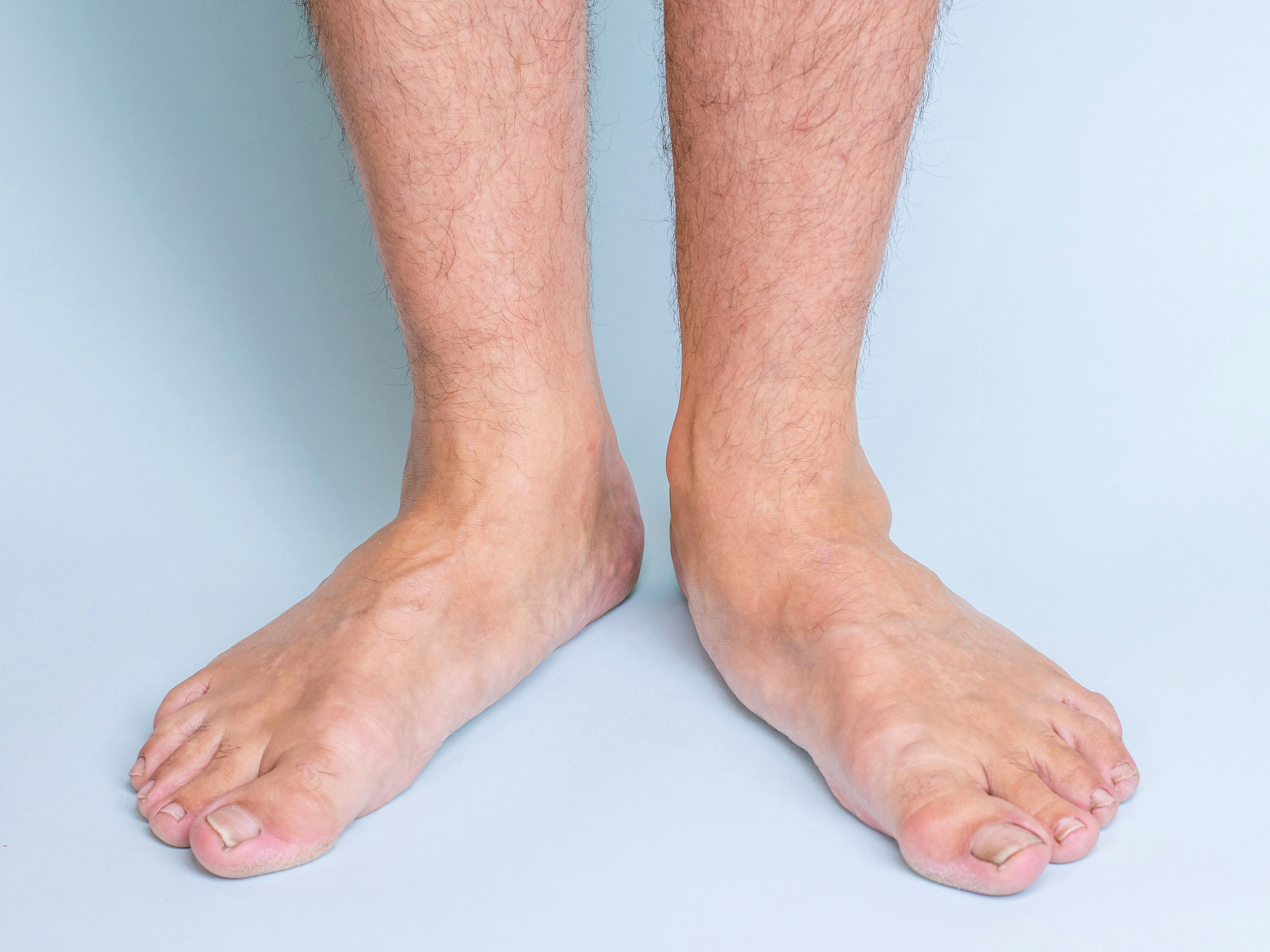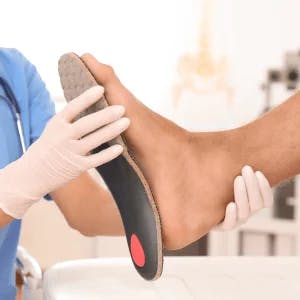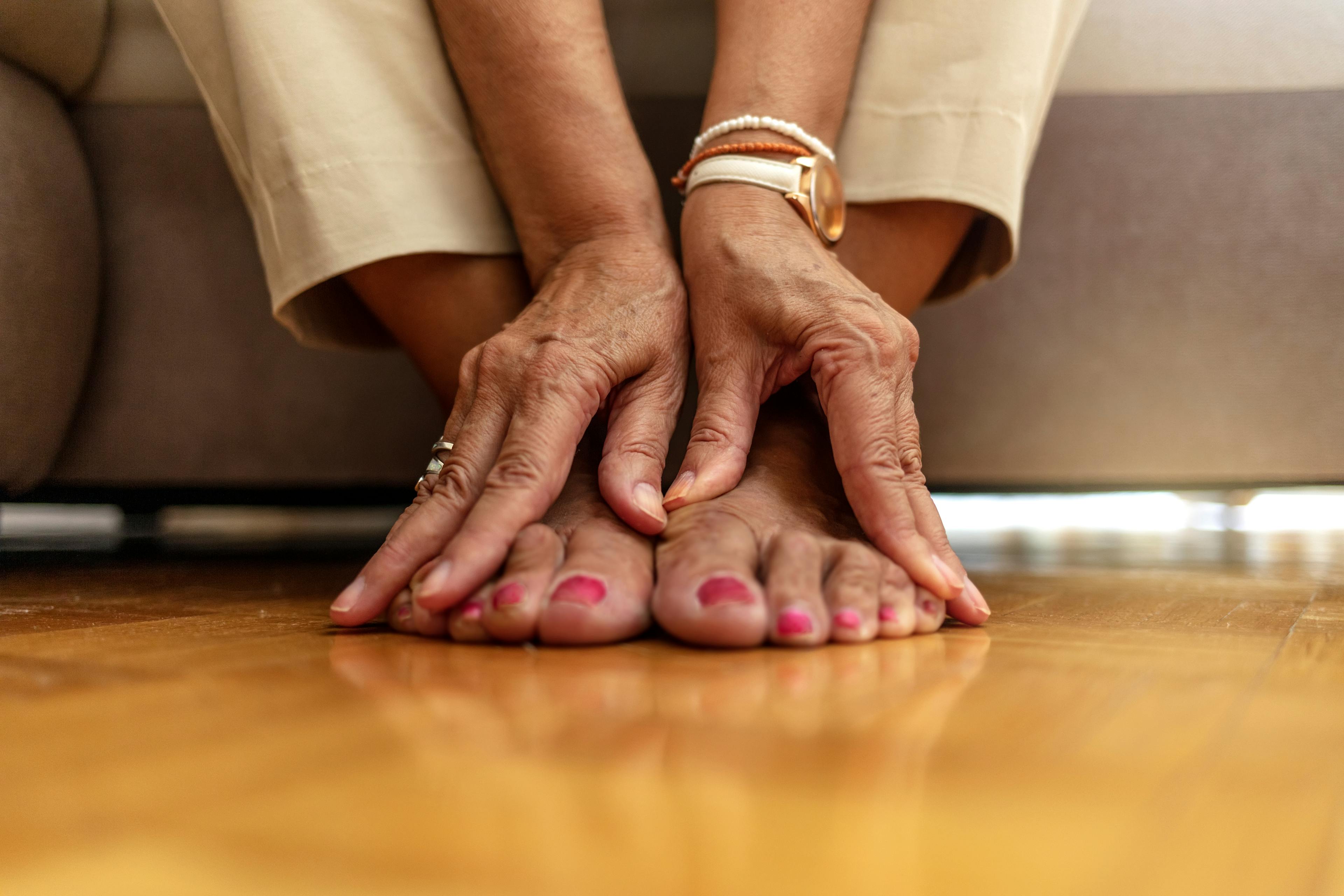Key Takeaways
Flat feet can lead to pain, fatigue, and poor body alignment, especially after long periods of standing or activity.
At-home tests like the wet test or checking shoe wear patterns may reveal signs of flat arches, but a proper diagnosis should come from a medical professional.
Treatment options include orthotics, stretching, and in rare cases, surgery, depending on how symptoms impact your daily function.
Have you ever wondered if your feet are flatter than they should be?
Flat feet, also called fallen arches, are fairly common and don’t always cause noticeable issues. However, some people experience foot pain, fatigue, or difficulty with certain activities as a result of flat feet.
If you think flat feet might be affecting you, this post will help you recognize the signs and understand when it might be time to seek medical support.
What Are the Symptoms of Flat Feet
Not everyone with flat feet experiences pain, but symptoms such as these may indicate a problem:
- Foot pain, especially in the arch or heel
- Fatigue in the feet or legs after standing or walking
- Difficulty standing on your toes
- Shoes that wear down unevenly
- Ankle, knee, or back discomfort due to poor alignment
- Overpronation (feet roll inward when walking)
These symptoms may vary in severity or worsen after long periods of activity or while wearing unsupportive footwear.
How Are Flat Feet Diagnosed
Diagnosis of flat feet typically begins with a physical exam. Your provider will assess how your arches look while standing, walking, and sitting first. Next, they may also ask about symptoms, your activity level, and whether foot problems run in your family.
In some cases, any of the following tests may be recommended to get a clearer picture or rule out other conditions.
- X-rays or MRI scans to evaluate bone structure and joint alignment
- Gait analysis to observe how your feet move as you walk
- Footprint tests to see how much of your sole makes contact with the ground
How to Determine if You Have Flat Feet
While an official diagnosis should come from a healthcare provider, there are a few ways you can check at home if you suspect you have flat feet.
Flat Feet Self-Exam Techniques
The Wet Test
- Wet the bottom of your foot.
- Step onto a piece of cardboard or a surface where you can see your footprint clearly.
- If most or all of your sole is visible, this may indicate a low or collapsed arch.
Arch Observation
- While standing, look at the inside of your foot in a mirror.
- If the arch flattens completely and touches the floor, this could indicate flat feet.
- Lift one foot and observe whether the arch returns when you are not bearing weight. This may indicate flexible flat feet.
Check Shoe Wear Patterns
- Look at the soles of your most worn shoes.
- Excessive wear on the inner edges of your soles may be a sign of overpronation, often linked to flat feet.
How to Fix Flat Feet
While not all cases require treatment, if flat feet are causing pain or interfering with your mobility, there are several ways to manage the condition.
Orthotic Devices
Custom orthotics or arch supports support foot alignment, distribute weight more evenly, and relieve pressure on problem areas. Over-the-counter inserts may work for some, but custom devices offer more personalized support.
Physical Therapy
Stronger muscles around the arch serve as a way to provide more stability and reduce strain on the foot and ankle. A physical therapist may recommend targeted exercises to improve balance, flexibility, and walking patterns.
Stretching and Strengthening Exercises
Stretching the Achilles tendon and calf muscles works to improve foot mechanics. Exercises that build strength in the arch and ankle also help to correct fallen arches and reduce pain.
Flat Feet Surgery
In more severe cases that don’t respond to conservative treatment, surgery may be considered to correct alignment or support structure. This is generally a last resort and not necessary for most people.
Flat Feet Treatment at CLS Health
If you’re starting to notice signs of flat feet or struggling with chronic foot discomfort, our foot and ankle specialists offer personalized evaluations and care. From identifying the root cause of your symptoms to fitting you for orthotics or recommending targeted treatments, we’re here to support your mobility and comfort.





